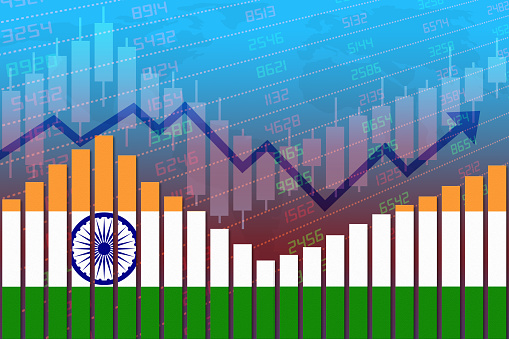What Is the Market Economy?
A market economy is a system where decisions regarding production, distribution, and investment are guided by the forces of supply and demand. The government has limited interference and all suppliers and consumers enjoy contract freedom. Hence, price signals are very important to the functioning of a market economy. Moreover, a market economy encourages innovation and competition.
Competition
Competition is an important characteristic of a market economy. It occurs between businesses from different industries or countries, as well as competition among businesses of the same industry. Competition can take place through price differences and other means. Competition can have positive and negative effects, and is an important topic of debate among economists. In the following paragraphs, we discuss some of the ways competition affects the market economy.
Competition can boost the quality of products and services. It also improves the living standards of consumers. It also helps create new products and services. Competition can lower prices, which increases consumer spending. It also promotes the growth of new industries, creating millions of new jobs. Competition can also encourage companies to be more efficient and create less waste.
Markets can become highly consolidated if a few companies control too much of a market. This can create a negative effect on consumers. Instead of offering more products to the market, a dominant firm can increase prices, cut quality, or block potential competitors. Research has also linked market power with increasing inequality. Without enough competition, prices and wages will rise and consumers will suffer. As a result, competition is essential to the well-being of the market economy.
While competition is crucial to a successful economy, it has become less widespread over time. The concentration of market power in the United States has widened, resulting in a decrease in price competition. In addition, market concentration is expanding across industries, leading to harmful price increases.
Limited government intervention
There are several schools of economic thought that argue for limited government intervention in the market economy. Some argue that the Law of Demand and Supply is not sufficient to maintain economic equilibrium and that government intervention is necessary to maintain the proper functioning of the economy. Advocates of limited government intervention include the Austrian school, liberalism, and New Classical macroeconomics.
Some argue that limited government is beneficial because it allows for a high degree of freedom and ensures that everyone can speak out about their concerns and views. It also ensures that governments are subject to law and accountable to the citizens. Limited government intervention can benefit the market and maintain stable policies. This is important for investor confidence.
Some argue that the government’s role in the market economy is to regulate private firms to prevent exploitation and to promote social objectives. In the example of the insurance companies who exploited the victims of the pandemic, the government stepped in to protect victims. Moreover, the government has to intervene when market failures and imperfect information result in price interventions.
Some argue that limiting government intervention in the economy can increase innovation and lower costs. While this is a widely agreed upon point, economists disagree on exactly how limited government intervention is a good thing. However, critics of limited government say that the government is obligated to handle certain issues that are impossible for a free market. An example of such a responsibility is environmental regulation. While individuals can pursue civil recourse if they violate environmental regulations, government enforcement is necessary.
Production of goods and services based on changing demand
In a market economy, production of goods and services based on changing demand is the basis of economic activity. Prices of inputs, weather, and other factors all affect how much a firm can charge for its product or service. The amount of output that a firm produces depends on these factors, and the lower the costs, the higher the profit.
Demand can change due to a number of factors, such as changing tastes and preferences, as well as the price of related goods. If prices of certain goods and services go down, more people are inclined to purchase them. This shifts the demand curve to the right, and the quantity demanded rises.
The first factor is price. This factor influences how much a buyer can spend. In a competitive market, the price of a product is determined by how much a buyer is willing to pay. Increasing prices will entice additional suppliers to enter the market, thereby increasing the supply until a market-clearing price is reached. However, if prices are falling, more suppliers will exit the market, reducing the available supply of the product or service.
Production of goods and services based on changing demands is a natural process in the market economy. It is a complex process, which requires an understanding of the principles of supply and demand. The demand curve is a diagram that charts the quantities that consumers are willing to purchase at a given price.
The competitive pressure between producers and buyers in a market economy is one of the main reasons why prices stay low. This mechanism ensures that the production of goods and services in a society is efficient. If demand increases, prices rise as well. The next time a demand rises, competitors will jump into the market to increase profits by producing the same item. Then, a surplus will appear in the market.
Economic growth
The measure of economic growth is the GDP, or gross domestic product. But the GDP doesn’t capture everything that contributes to a nation’s economy. For example, care for children is not included in GDP, whether the child is cared for by the parents or a paid caregiver. Furthermore, the GDP does not reflect the distribution of income among the population. As a result, the GDP may decrease or increase even if the population grows by four per cent.
Economic growth is the result of increases in the productive capacity of a society. It also reduces the sting of scarcity, in which there aren’t enough resources to meet everyone’s wants and needs. This forces individuals to make choices. And each choice has an opportunity cost. Economic growth depends on the level of capital, labor, and resources that are available.
Economic growth is closely related to the institutions that support productive activity. Douglass North defined institutions as the “foundational rules of the game.” These rules govern the way that an economy operates and reward people for productive activity. These institutions, which include laws, regulations, and customs, work through an incentive structure in an economy. These incentives are crucial to the growth of an economy.
Although the productivity of a nation’s economy depends on many factors, the main factor that drives it is technology. Innovation is a key driver of long-run economic growth. Further, there are additional variables that explain the productivity of a country. The World Growth Institute promotes economic growth among developing countries.
The reduction in inequality has a major impact on economic growth. Research has indicated that inequality has an impact on human capital formation. It also affects fertility rates.



